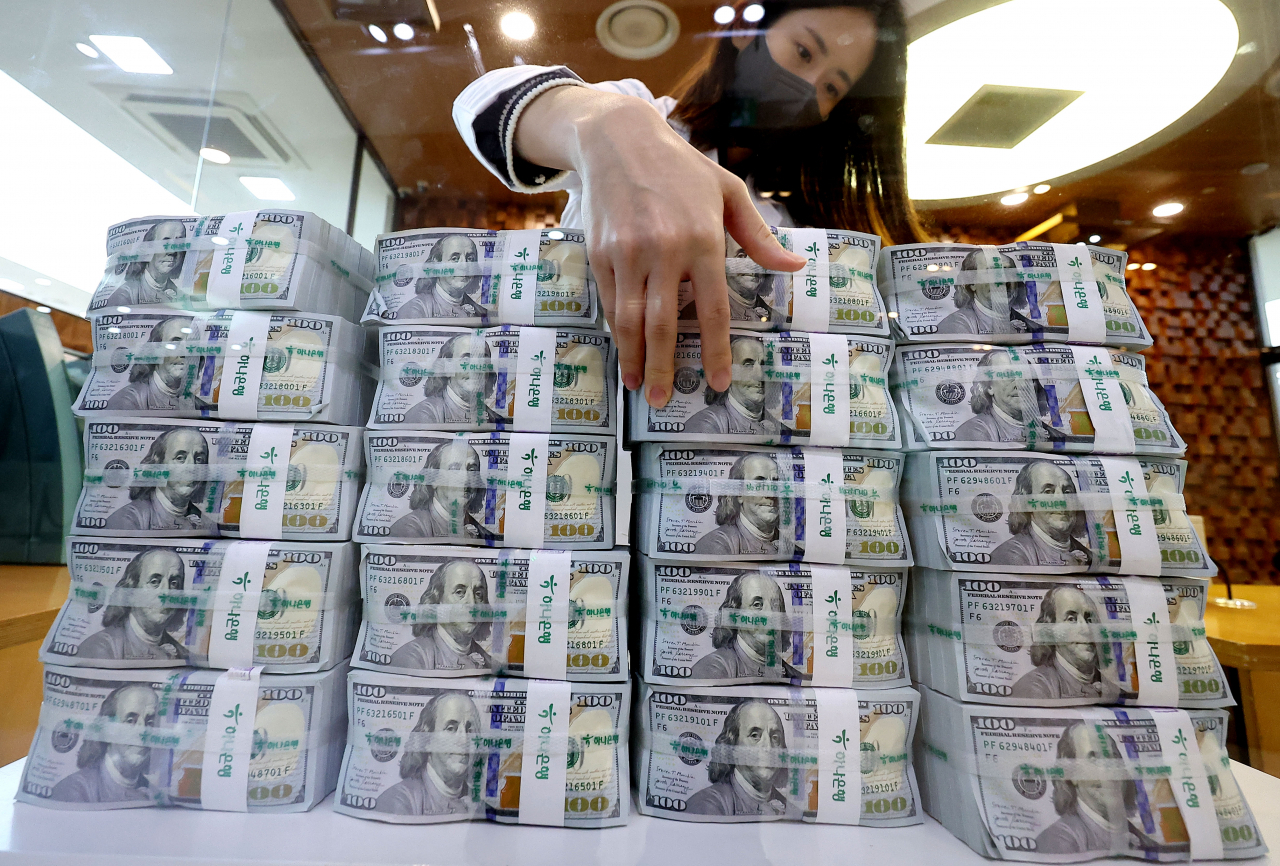Korea posts biggest drop in dollar reserves since 2008 as won plunges
By Choi Si-youngPublished : Oct. 6, 2022 - 15:52

South Korea’s foreign exchange reserves shrank by nearly $20 billion in September, the biggest monthly decline in 14 years, as authorities double down on efforts to prop up the quickly depreciating won that is now at a 13-year low against the US dollar.
According to Bank of Korea data on Thursday, the reserves stood at $416.77 billion at the end of September, down $19.66 billion from $436.43 billion in August. That is the largest monthly dip since October 2008, when reserves fell by $27.4 billion.
Intervention that had taken place to curb market volatility, fueled by bets on higher yields from the US dollar, was one of the major reasons behind the dollar drain, the central bank said, referring to the decreases in the converted value of nondollar assets as another factor.
But Korea is nowhere close to burning through the reserves -- a scenario entertained by pessimists refusing to shake off a crisis mood reminiscent of either the 1997 Asian financial crisis or 2008 global financial crisis -- according to the BOK, whose chief has also repeatedly brushed off such speculation.
Oh Kum-hwa, a senior BOK official, said it is not “that pertinent” to describe the economy as going through a currency crisis. He also noted the average monthly dollar drain in the last 12 months falls short of that recorded in the early months of the 2008 crisis.
In the past week, $1 bought as much as 1,430.2 won and as little as 1,402.4 won, compared with 1,185.5 won at the start of the year in the onshore market.
Meanwhile, the central bank is expected to pivot to a second rate hike of 50 basis points at the policy meeting next week to prevent further capital outflows and tame persistent inflation. The policy rate, 2.5 percent for now, will likely reach 3.5 percent by year-end on the most hawkish bets, compared to the 4.5 percent most investors expect from the US.








![[Graphic News] More Koreans say they plan long-distance trips this year](http://res.heraldm.com/phpwas/restmb_idxmake.php?idx=644&simg=/content/image/2024/04/17/20240417050828_0.gif&u=)
![[KH Explains] Hyundai's full hybrid edge to pay off amid slow transition to pure EVs](http://res.heraldm.com/phpwas/restmb_idxmake.php?idx=644&simg=/content/image/2024/04/18/20240418050645_0.jpg&u=20240419100350)








![[KH Explains] Hyundai's full hybrid edge to pay off amid slow transition to pure EVs](http://res.heraldm.com/phpwas/restmb_idxmake.php?idx=652&simg=/content/image/2024/04/18/20240418050645_0.jpg&u=20240419100350)

![[Today’s K-pop] Illit drops debut single remix](http://res.heraldm.com/phpwas/restmb_idxmake.php?idx=642&simg=/content/image/2024/04/19/20240419050612_0.jpg&u=)